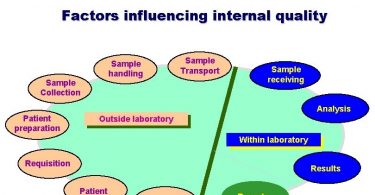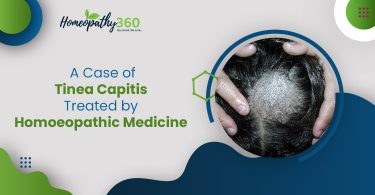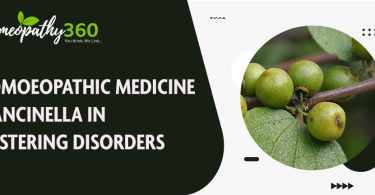By Dr Tanu Bhatia
Abstract:
Fagopyrum esculentum, prepared by Dr Dexter Hitchcock1, has had an extensive proving, yet there is little clinical experience with the drug, in record. There is certainly no other remedy which possesses a more marked characteristics and it can. It is safe to say that very less practising homoeopaths, are aware of its pathogenesis or have ever put it into use . It is not just a remedy acting chiefly on skin but is one amongst the many polychrests which, if brought to use, will help in curing a large number of cases.
Keywords: polychrests, pathogenesis, characteristics, Skin, Fagopyrum esculentum.
INTRODUCTION:
Fagopyrum esculentum is derived from the Latin and Greek word, “fago” (meaning beech) and “pyrum” (meaning nut); “esculentum” means “edible.” 2
Garden buckwheat, also known as “Kuttu” in hindi, is a cover crop widely cultivated to suppress weeds and improve the soil. It is widely used as an alternative cereal during fasting days in India.
Natural order: Polygonaceae
Common name: Garden buckwheat
Preparation: The fresh mature plant is rounded to a pulp and macerated in two parts by weight of alcohol.3
History:
Buckwheat arrived in the 14th century with the Mongols from its native country, Central Asia, to Central Europe and was originally referred to as “heath corn”. Later, it was known as “buckwheat” because it thrives on poor, sandy soils and therefore, previously the preferred locations for farming were the heath areas of North West Germany3. In India and neighbouring countries, it is cultivated in Khasia hills, throughout the Himalayas.1
Traditional use:
Traditionally, it was used alone or in combination with other materials for improving the condition of tired legs2.
Pathogenetic action:
The foliage is occasionally eaten by mammalian herbivores, including rabbits, deer, and livestock. However, a photosensitive reaction occurs in light-skinned animals that eat the foliage while in the presence of sunlight. This reaction is called “fagopyrism,” producing such symptoms as swelling of the head and neck, blistering of the skin, and seizures.4
Sometimes, people experience similar allergic reactions after eating products made from buckwheat flour or after exposing themselves to the foliage.4
Characteristic symptoms 5:
- Visible pulsation of the carotids and other arteries.
- Offensiveness distinguishes many excretions.
- Headaches involving eyes, root of nose, and back of neck.
- Hot head; < bending head forward, > bending head backward.
- Headache with tired neck.
- Itching is general; scalp, eyes, margins of lids; ears; nose.
- The nose is sore and has crusts in it.
- Lips dry and cracked.
- Rheumatic symptoms are > by motion.
- Heat and restlessness after retiring.
- Pruritis senilis.
Main clinical indications:
- Mind ─
It has marked action upon mental conditions leading to depression of spirits, irritability, inability to study, or to remember what has been read, inability to fix attention.
- Head ─
It’s effect upon the head are deep-seated and persistent. There is vertigo, confusion, severe pain, in many parts of head, with upward, pressure described as of a bursting character.
- Eyes ─
The eyes are swollen, red, hot and itching; as if there is sand in eyes. Sensation as if eyeballs were being pushed out and at the same time held back by cords. The Meibomian glands of left lower lid are inflamed and itching in margins.7 Lachrymation< by reading.
- Ears ─
In the ears, there is excessive itching, especially along the Eustachian tubes as well as there is heat, itching and neuralgic pains in external ears.
- Nose ─
The nose is swollen, red, inflamed, and sore. There is, at first, fluent coryza with sneezing, followed by fullness, dryness and formation of crusts. Useful in post nasal catarrh. Dry crusts, granular appearance of posterior nares with itching.
- Face –
Face flushed. The face is pale or unevenly flushed, with dark semicircles below the eyes. Later, the face becomes swollen, hot and dry, as though severely sun burnt, and the lips are cracked with longitudinal crack on upper lip. There is excessive soreness of left malar bone, also of temporal region.
- Teeth and Mouth –
The mouth feels dry and hot, and yet saliva is not wanting. There is soreness and swelling of roof of mouth and the tongue is red and fissured along its edges. There is soreness of teeth in closing them; aggravated by cold water. Bad taste in mouth in morning.
- Throat –
In the throat, there is soreness with pain just back of the isthmus of the fauces, a feeling of excoriation and soreness extending deep down in the pharynx.
The uvula is elongated, the tonsils are swollen and red, there is a sensation of rawness in the throat.
- Stomach –
Persistent morning nausea, so can be thought of use in the vomiting of pregnancy. Nausea is better by eating. There is uneasy, empty “all-gone” feeling in stomach. The appetite is improved by eating.
- Abdomen –
The region of the liver is painful, tender and there is aggravation from pressure and lying on the right side, compelling the patient to lie on the left side.
The abdomen is distended with flatulence; is tympanitic; and cannot bear the pressure of clothes.
- Stool and Rectum –
Diarrhoea with tenesmus and burning in the rectum after stools. The stools are watery or pappy with flatus and very offensive.
- Urinary Organs –
The urine is scalding, and pain extends from testicles to abdomen. Dysuria, especially in voiding last drops of urine.
- Male Sexual Organs –
Profuse, offensive sweat of genital organs.
- Female Sexual Organs –
Has affinity for right ovary, pain in right ovary on walking, especially in afternoon. There is pruritus relieved by cold water. Leucorrhoea is staining yellow, the discharge being more noticed at rest.
- Respiratory Organs –
Very offensive breath.
- Chest –
A heavy, pulsating pain in chest extends to all its parts. This is persistent, and is worse from a deep inspiration. Heavy feeling, bruised pains and stitches in chest. After retiring, there is severe sticking through breast from nipple backward, relieved by pressure.
- Heart –
Dull pains around the heart with oppression and occasional sharp pains passing through the heart. Pressure with the hand increases the oppression. The pulse is increased but is extremely variable.
- Neck and Back –
Pains extend from occiput to back of neck and are relieved by bending the head backward. There is excessive stiffness of neck and soreness of all neck muscles. It specially causes stitching pains in the region of right kidney.
Externally, there is scarlet redness of the neck below the mastoid process, throbbing of the carotids, the neck feels tired, the head heavy and the parotid glands are swollen and painful.
- Upper limbs –
Pain in shoulder every morning, greatly aggravated by getting chilly.
Rheumatic pains in the shoulders are of a dull aching character. Stinging and burning pains extend the whole length of fingers, aggravated by motion.
- Lower limbs –
There is numbness in the limbs, with dragging in the joints, especially right knee, hip and elbow.
- Skin –
There is intense itching of the arms and legs, becoming worse toward evening. Blotches like flea-bites appear in many localities, sometimes all over the body, are sore to the touch and are multiplied by scratching. These eruptions are persistent and the itching is intense. Blind boils may be developed and attain a large size. The itching of the face is especially marked about the roots of the whiskers. Itching of the hands which is “deep in” and is persistent and annoying, this condition is the result of irritation of the coats of the arteries. Generally, worse in afternoon, from 5 p.m. to 7 p.m.
- Sleep –
Constant desire to sleep early in the evening and is characterised by stretching and yawning, especially from 5 p.m. to 6 p.m.
Restless sleep at night; wakes at 5 a.m. and sleeps again, disturbed by many troublesome dreams.
Aggravation:3,5,6,7
Scratching, sunlight, after retiring, ascending stairs, from deep inspiration, walking in bright sunlight, lying on right side.
Amelioration:3,5,6,7
Cold bathing, coffee, cold applications, motion in cold air, sitting still in a warm room.
Case:
A case of 8 years old male child visited the OPD at Noida with a complaint of small miliary eruptions all over the body, especially along the hairy portions, along with recurrent tendency to coryza since 2 years.
The coryza is watery, transparent with sneezing whenever he went under sun. He also had miliary itchy eruptions all over the body, which was worse under sun and heat and he was relieved by bathing with cold water. There was a lot of itching and smarting in the eyes with nausea in the morning.
He was a fussy eater and complained of heat in retrosternal region with many eructations.
He took all types of treatment previously without much relief. After a careful study and examination, he was prescribed a dose of Fagopyrum esculentum 200, once a day for two days, followed by Sac lac for 15 days. The remedy was chosen based on the following points:
- Intensely itchy military eruptions on hairy parts < under sun, > bathing with cold water.
- Persistent nausea in the morning
- Fluent coryza with sneezing < under sun
- Itching and smarting in the eyes
He reported after 15 days with marked improvement. His appetite improved, his coryza was better and eyes and skin complaints improved drastically. He was again given a dose of Fagopyrum esculentum followed by Sac lac for another 15 days after which he got permanent relief.
Conclusion:
Thus, its action is much more than being just limited to the skin, rather an experienced Homoeopathic healer would put this remedy into use to bring about cure in many other conditions where its employment can bring about rapid, gentle and most permanent way of healing to a large number of patients who are in dire need of it.
References :
- P.S. Chakraborty,J.P. Singh, M.K. Rai, Pramodji Singh, A.K. Vichitra, A.K.N. Singh ,et al; FAGOPYRUM ESCULENTUM – A Multicentric Clinical Verification Study conducted by CCRH IJRH ,Vol. 3, No. 1, January-March 2009; pg 23,24
- Benedum, Eberwein, Loew, Schilcher, Steinhoff, C. Schwöppe; kooperation Phytopharmaka;Buckwheat (Buckwheat – Fagopyrum esculentum Moench); 2004-2019 Phytopharmaceutical Cooperation, Bonn. Available from www.koop-phyto.org/en/medicinal-plants/buckwheat.php http://
Anschutz E. P. ,New, Old And Forgotten Remedies , B Jain Publishers Pvt Ltd, 1 August 2002
- Hilty John; Weedy Wild flowers Of Illinois; 2003-2017 ; Available from www.illinoiswildflowers.info/weeds/plants/cm_buckwheat.htm
- Clarke J. H. , A Dictionary of Practical Materia Medica ,Vol I, B Jain Pub Pvt. Ltd; Reprint edition, June 30, 2005 , pg 749-751
- BOERICKE William, POCKET MANUAL OF HOMŒOPATHIC MATERIA MEDICA AND REPERTORY, B Jain Publishers Pvt Ltd :54th Impression :2013, pg 281
- Boger C.M., A Synoptic Key of the Materia Medica , B Jain Publishers Pvt. Ltd: Reprint edition 2006, pg 194
About the author:
Dr Tanu Bhatia, Senior research fellow (Dr D.P. Rastogi Central Research Institute, Noida)





